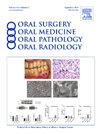Illicit cocaine and opioid drug-related maxillofacial trauma: a 10-year review of a state-wide database of all hospitals admissions
IF 2
3区 医学
Q2 DENTISTRY, ORAL SURGERY & MEDICINE
Oral Surgery Oral Medicine Oral Pathology Oral Radiology
Pub Date : 2025-01-01
DOI:10.1016/j.oooo.2024.07.013
引用次数: 0
Abstract
Objective
The aim of this study was to investigate the characteristics of illicit cocaine and opioid drug-related facial trauma and determine whether the presence of cocaine or opioid drug use in facial trauma patients influenced the cause of injury, morbidity, or management.
Methods
A retrospective observational cohort study was performed using records from a state-wide database of all patients who presented to a Victorian hospital with a facial fracture between 2004 and 2014. Data collected included demographics, concomitant opioid and cocaine use, mechanism of injury, facial injuries, and management. Statistical analysis was done using chi-square test, Student's t tests, binary logistic regression analysis, and multivariable linear regression analysis. Results were considered statistically significant if P < .05.
Results
A total of 54,613 patient presentations for facial trauma were analyzed with 363 patients in the cocaine and opioid-related group, and 54,250 patients in the nondrug-related group. Patients with illicit drug use were more likely to have facial fractures caused by interpersonal violence when compared with nondrug users (47.9% vs 23.5%, OR = 2.23, P < .001). Opioid and cocaine users had 0.3 more total fractures per presentation, which included more midface and skull fractures, and more facial lacerations (P < .001). There was no statistically significant difference in the need for surgical management between the two groups. Opioid and cocaine affected patients also on average had a longer hospital stay of 3.4 days and required 0.9 more allied health inputs during their admission when compared with nondrug users (P < .05). This effect was similarly reflected when controlling for confounding variables (P < .001).
Conclusions
Concomitant cocaine or opioid use in facial trauma patients leads to more violence-related injuries with higher morbidity and healthcare costs.
与非法可卡因和阿片类药物有关的颌面部创伤:对全州所有医院入院数据库的十年回顾
本研究旨在调查非法可卡因和阿片类药物相关面部创伤的特征,并确定面部创伤患者使用可卡因或阿片类药物是否会影响受伤原因、发病率或治疗。我们利用全州数据库中的记录开展了一项回顾性观察队列研究,该数据库收录了 2004 年至 2014 年间因面部骨折前往维多利亚州一家医院就诊的所有患者。收集的数据包括人口统计学特征、同时使用阿片类药物和可卡因的情况、受伤机制、面部损伤和处理方法。统计分析采用卡方检验、学生检验、二元逻辑回归分析和多变量线性回归分析。如果结果小于 0.05,则认为具有统计学意义。共分析了 54,613 名面部创伤患者,其中可卡因和阿片类药物相关组有 363 名患者,非药物相关组有 54,250 名患者。与非吸毒者相比,使用非法药物的患者更有可能因人际暴力而导致面部骨折(47.9% vs 23.5%,OR = 2.23,< .001)。阿片类药物和可卡因使用者每次发病时的骨折总数比其他人多0.3例,其中包括更多的中面部和颅骨骨折,以及更多的面部撕裂伤(< .001)。两组患者在手术治疗需求方面没有明显的统计学差异。与非吸毒者相比,受阿片类药物和可卡因影响的患者平均住院时间延长了3.4天,入院期间需要的专职医疗投入增加了0.9 ( < .05)。在控制了混杂变量后,这一影响也得到了类似的反映(< .001)。面部外伤患者同时使用可卡因或阿片类药物会导致更多与暴力相关的伤害,并带来更高的发病率和医疗费用。
本文章由计算机程序翻译,如有差异,请以英文原文为准。
求助全文
约1分钟内获得全文
求助全文
来源期刊

Oral Surgery Oral Medicine Oral Pathology Oral Radiology
DENTISTRY, ORAL SURGERY & MEDICINE-
CiteScore
3.80
自引率
6.90%
发文量
1217
审稿时长
2-4 weeks
期刊介绍:
Oral Surgery, Oral Medicine, Oral Pathology and Oral Radiology is required reading for anyone in the fields of oral surgery, oral medicine, oral pathology, oral radiology or advanced general practice dentistry. It is the only major dental journal that provides a practical and complete overview of the medical and surgical techniques of dental practice in four areas. Topics covered include such current issues as dental implants, treatment of HIV-infected patients, and evaluation and treatment of TMJ disorders. The official publication for nine societies, the Journal is recommended for initial purchase in the Brandon Hill study, Selected List of Books and Journals for the Small Medical Library.
 求助内容:
求助内容: 应助结果提醒方式:
应助结果提醒方式:


